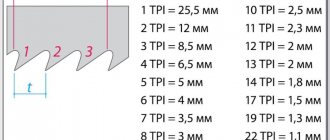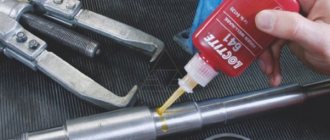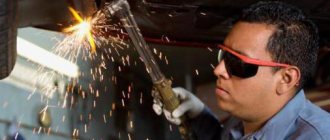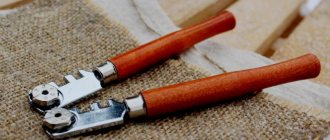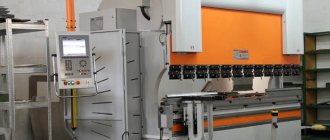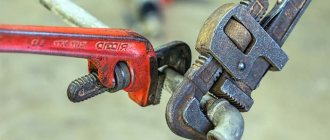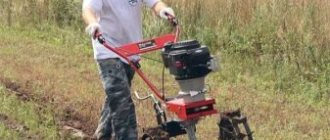How is ultrasonic testing carried out?
The method is more often used to control the strength of welds. An ultrasonic weld flaw detector operates on the following principle. Certain deformations, called acoustic or elastic waves, propagate into the thickness of the metal. They come in several types:
- infrasound;
- sound;
- ultrasonic;
- hypersonic.
During the propagation of ultrasound, the medium through which it diverges performs measured oscillations relative to the equilibrium point. Longitudinal and transverse vibrations can act in solid bodies. Both types of waves allow you to control the strength of welds as accurately as possible. The speed of delivery and propagation of ultrasound directly depends on the strength and internal environment of the material under study. The intensity of the sound waves can be controlled.
As the sound wave travels, its intensity subsides. The density of the material can be judged from the rate at which this occurs. The device shows the ultrasonic attenuation coefficient, forming it based on their scattering and absorption indicators. The accuracy of the readings is high, which allows you to get a clear picture of the quality of welds, metal, and other solid materials.
Equipment used
The following equipment is used for ultrasonic testing:
- Flaw detector.
- Piezoelectronic transducer (PET).
- Lemo connecting cable.
The flaw detectors currently used are small in size, convenient to use and not difficult to carry. Depending on the manufacturer, the functionality of flaw detectors varies from the simplest with monochrome displays such as UD-2-70 to the most compact and advanced with color displays and program control.
Piezoelectronic transducers (or PETs for short) differ in frequencies, input angles, radiation methods, and so on.
The following types are used to control welds:
- straight and inclined;
- combined and separate-combined;
- focusing, non-focusing, as well as chordates;
- contact and non-contact.
Combined transducers - have only one piezoelectric element which is both an emitter and a receiver at the same time.
Separately combined converters already have 2 piezoelements, one of which is a source of waves, and the other a receiver. These converters provide more accurate defect detection. They can be used to monitor surface defects and control surfaces with high roughness.
How does an ultrasonic weld flaw detector work?
Science knows only a few ways to work with ultrasonic devices to control the density of welds and other metal compounds. Their differences are only in the method of assessing the information received. Any type of data assessment complies with the current GOST.
Types of ultrasonic testing of welding seams
Joints are sounded using different methods:
- direct beam;
- once reflected;
- twice reflected;
- reflected many times.
The direction of the beam in the ultrasonic method of testing welded joints is selected along the normal, where defects are especially dangerous.
Main location methods:
- Pulse echo ultrasound. The device is configured to emit and receive waves. If the audio wave is not detected by the sensor, everything is in order, no defects are found in the seam. If a reflection is detected, there is a media section.
- The echo-mirror method involves the use of a wave-generating sensor and a collecting receiver. The devices are installed at an angle to the axis of the seam. The receiver catches the reflected waves. Based on the results, cracks in the welded joint are diagnosed.
- Shadow diagnostics involves the passage of ultrawaves over the entire area of the seam; the receiver is installed behind the welded joint. If the sound is reflected and returned to the emitter, the receiver detects the shadow area.
- Mirror-shadow flaw detection is a combination of mirror and shadow examination. A set of sensors registers reflected sound vibrations. Pure wave - the seam is made without any violations. The presence of a blind zone is a sign of discontinuities.
- The delta method is based on exposure to a directed beam. Defects are determined by the reflection of ultrasound and changes in trajectory. Accurate results require delicate adjustment of diagnostic equipment.
In practice, the first and third methods are most often used. Non-destructive testing using ultrasound reveals defects that provoke depressurization of welded products. It is considered an effective way to prevent accidents.
Ultrasound source
Despite the different methods of collecting analytical data, ultrasonic metal flaw detectors use a similar method of operation. The main part of the device is a plate made of quartz or titanium barium. The plate is located in a special probe (search head). The probe is slowly moved along the surface under study, recording the wave extinction coefficient. The wave is supplied due to the action of an electric current, as a result of which ultrasound beams are generated. Based on the data obtained, we can talk about the density of the connection, the presence of defects, cavities, cracks, and other unnecessary deformations.
Training and certification of specialists
Ultrasonic flaw detection specialists are trained and certified in special certified organizations. There are 3 levels of qualification for flaw detectors.
Level I is assigned to beginners whose work will be carried out under the supervision of a specialist with level II or III. A first-level specialist cannot independently choose a control method, evaluate the results, or select technology and mode.
Level II flaw detectorists can independently carry out and supervise the work. Make a decision on the choice of control method, methods, technologies, and also evaluate the control results. They can develop technological maps and approve them.
Level III flaw detectors can supervise the work of level I and II flaw detectors, conduct training and certification.
Diagnostic stages
Before starting the study, it is necessary to clean the metal from corrosion, paint, and other foreign matter. There is no need to clean the entire surface. It is enough to maintain a gap of up to 70 centimeters. In this form, the material is already ready for diagnostics, but it would be better to additionally ensure ultrasound permeability. For these purposes, grease, oil, glycerin, and other liquids containing fatty inclusions are used.
Before starting work, an ultrasonic weld flaw detector must be configured to achieve specific goals. There are several options here:
Connecting cables
to order
Cable CP50-CP50 Connecting cable for connecting combined ultrasonic transducers to flaw detectors. Cable CP50-CP50 (1.5 m) (Code: 50219) Cable CP50-CP50 (3 m) (Code: 50217) Cable CP50-CP50 (5 m) (Code: 50218) Cable CP50-CP50 (20 m) ( Code: 50710)
from 38 €
to order
View
from 38 €
View
in stock
Cable CP50-Lemo00 Cable for connecting combined ultrasonic transducers to flaw detectors. Cable CP50-Lemo00 (1.0 m) (Code: 50235) Cable CP50-Lemo00 (1.5 m) (Code: 50231) Cable CP50-Lemo00 (5 m)
from 38 €
in stock
View
from 38 €
View
to order
Cable CP50-Lemo00 (angular) The cable is designed for connecting combined ultrasonic transducers to flaw detectors.
from 43 €
to order
View
from 43 €
View
Go to section (27)
How to achieve the most accurate research results?
To obtain more accurate data, it is necessary to move the flaw detector probe in a zigzag manner along the surface of the material being examined. In this case, it is advisable to rotate the probe at least 10-15% around the axis of the metal. If the device emits any uncharacteristic vibrations, it is necessary to turn the probe as far as possible in the indicated place so that it becomes possible to accurately determine the dislocation of a poor-quality connecting seam. The search continues until the location of the matter where the ultrasound peak is highest is determined.
It should be taken into account that the ultrasound diagnostic device may produce errors due to wave reflection from the seams. For this purpose, additional research methods are used. If several diagnostic methods lead to the same answer, you can record the defect by recording the coordinates of the flaw. Equipment manufacturers, based on the requirements and rules of GOST, recommend diagnosing the same object at least twice with different devices.
The data obtained during operation of the ultrasonic flaw detector is recorded in a special journal or table. This allows you not only to quickly eliminate a flaw in the connection, but also to speed up re-diagnosis, because potential problem areas are already known.
Device setup
Setting up an ultrasonic flaw detector begins with setting stable generation in the voltage converter device. In this case, resistor R39 is selected. Then the required repetition frequency is obtained (120-150 pulses/s), and resistor R2 is selected.
An amplitude indicator of 70-80 pulses/s is achieved by selecting dinistor V1. Then capacitors C22 and C26 are selected, which set the limits of change during rotating motors of resistors R30 and R35 and the duration of the pulses of the delay monostables (10-25 μs) and the controlled zone (7-45 μs).
Defects that are accurately detected by ultrasound diagnostics
Inspection of welding seams, carried out using ultrasonic devices, gives a clear picture of the situation. Correctly performed work with the device almost 100% guarantees the accuracy of answering questions. But, nevertheless, the scope of use of the equipment has some limitations.
Problems that can actually be detected by an ultrasound sensor:
Diagnostics is most accurate if applied to the following types of metal:
Sutures that can be examined using ultrasound can be:
What to look for when purchasing?
When purchasing a device, pay attention to the following indicators:
- Portability of the device. The optimal indicator would be the light weight of the device. If the device is compact, then this is doubly good.
- Ease of use. The fewer additional settings, the easier it is to work with the device.
- Easy-to-understand interface. This is very important, since often without special training a beginner simply cannot understand it. The interface really should be clear so that there are no problems when enabling this or that option.
- Availability of warranty card and service. Be careful with equipment suppliers and sellers.
- The device must be suitable for piezoelectric transducers manufactured abroad. The same is important when purchasing a domestic device.
- Availability of clear, well-written operating instructions.
Field of application of ultrasonic flaw detector
Such devices are in greatest demand in the manufacturing sector. The diagnostic service can also be ordered privately to control welding seams during the construction of buildings, reconstruction of residential and industrial premises. Seam inspection is indispensable when you need to determine the degree of wear of water and gas pipes. Owners of the oil, chemical and engineering industries are actively purchasing equipment. Portable ultrasonic flaw detectors are used by geologists in the field, as well as laboratory assistants to examine small objects.
Ultrasonic flaw detector: price, delivery
The site presents the best models of devices. The range of prices and functionality will pleasantly surprise the company's clients. You can clarify the exact cost of a flaw detector by using the electronic communication form, indicating the exact model of the device. All models of diagnostic equipment are described in detail. Here visitors will learn information about the manufacturer, functionality, dimensions, and area of application of a particular flaw detector. Additional questions should be clarified with the consultant.
The price of any ultrasonic flaw detector also depends on the manufacturer. The entire range of the site is covered by a manufacturer's warranty. Targeted delivery to the regions is carried out. Free consultations are available to clients. Promotions and sales, information about which is regularly updated on the portal, will help you save.
